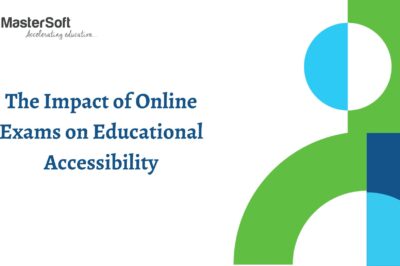The Impact of Online Exams on Educational Accessibility
In recent years, the landscape of education has undergone a profound transformation with the advent of online learning and assessments. The shift from traditional, in-person examinations to online exams has been both revolutionary and controversial. While online exams promise flexibility and convenience, their impact on educational accessibility is a subject of ongoing debate. This blog explores the multifaceted effects of online exams on accessibility, examining both the potential benefits and the challenges they pose.
Advantages of Online Exams for Accessibility
- Flexibility in Scheduling: online examination systems provide students with the flexibility to schedule assessments at times that suit their individual needs. This is particularly beneficial for those who have other commitments, such as jobs or family responsibilities. The ability to choose when to take an exam can alleviate the stress associated with rigid exam schedules and promote inclusivity.
- Geographical Accessibility: Online exams transcend geographical barriers, allowing students from remote or underserved areas to access education without the need to travel. This inclusivity can democratize education by making it available to individuals who may have limited access to traditional educational institutions.
- Diverse Learning Styles: The online format often accommodates diverse learning styles by offering a variety of assessment methods. Visual, auditory, and interactive components can be incorporated, catering to students with different learning preferences and abilities. This adaptability can enhance the learning experience for a broader range of individuals.
- Accommodations for Special Needs: Online exams can be designed with features to accommodate students with special needs. Customizable interfaces, adjustable font sizes, and additional time allowances are examples of accommodations that can be easily implemented in digital assessments, fostering a more inclusive educational environment.
Challenges and Concerns
- Technological Disparities: Perhaps the most significant challenge to accessibility is the existence of technological disparities among students. Not everyone has equal access to high-speed internet, updated devices, or a conducive environment for online exams. This digital divide can exacerbate existing educational inequalities, disadvantaging students from economically disadvantaged backgrounds.
- Security and Cheating Concerns: Online exams often raise concerns about academic integrity. While advancements in online proctoring technologies aim to prevent cheating, they can inadvertently create obstacles for students with certain disabilities. For instance, facial recognition software may struggle to recognize individuals with facial differences, creating an additional hurdle for some students.
- Stress and Anxiety: The pressure associated with online exams can be particularly challenging for students with anxiety or other mental health issues. Technical glitches, fear of online surveillance, and the unfamiliarity of the online environment may contribute to heightened stress levels, potentially hindering performance and exacerbating existing mental health challenges.
- Lack of Personal Interaction: Online exam platforms often lack the personal interaction that traditional exams provide. This absence of face-to-face communication can be detrimental for students who benefit from personalized assistance or who require additional clarification on exam content. The one-size-fits-all approach of online exams may not cater to the diverse needs of all learners.
Conclusion
In conclusion, the impact of online exams on educational accessibility is a complex and nuanced issue. While they offer advantages such as flexibility and geographic inclusivity, challenges like technological disparities and security concerns must be addressed to ensure that the benefits are realized by all students. Striking a balance between leveraging technology for accessibility and mitigating its potential drawbacks is crucial for creating an educational landscape that truly serves the needs of a diverse student population. As we continue to navigate the evolving terrain of online education, it is imperative to prioritize inclusivity and equity to harness the full potential of digital assessments while minimizing adverse consequences.
